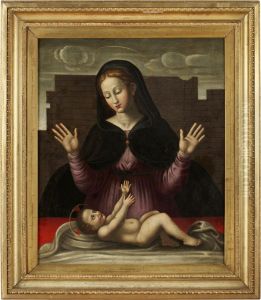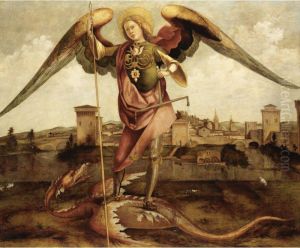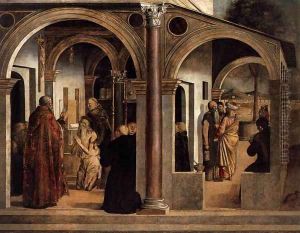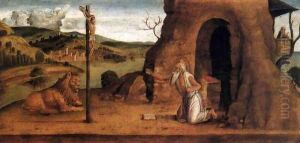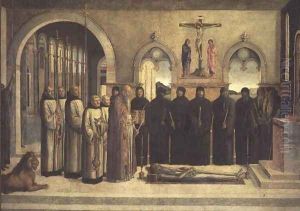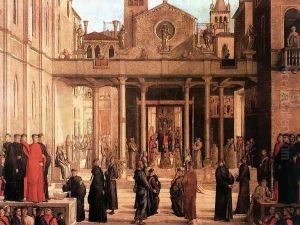Lazzaro Bastiani Paintings
Lazzaro Bastiani was an Italian painter of the Renaissance period, active mainly in Venice. He was born around 1429 in Venice, and his artistic career spanned the later part of the 15th century until his death in 1512. Bastiani's work is characterized by its narrative quality and attention to detail, typical of the Venetian school to which he belonged.
Bastiani was a contemporary of the Bellini family and was influenced by the works of Gentile and Giovanni Bellini. However, he also developed his own distinctive style. Initially, his works exhibited the influence of the Vivarini family and Antonello da Messina, and he was particularly adept at integrating these influences into his own compositions.
Throughout his career, Bastiani undertook a variety of commissions, ranging from altarpieces to portraits. Notable works include the 'Procession in Piazza San Marco' (1496), which is particularly celebrated for its detailed representation of contemporary Venetian life and architecture. He is also known for his religious paintings, such as 'Saint Jerome in the Desert'.
Bastiani's role in the Venetian art scene was significant, and he was involved with the Scuola Grande di San Marco, a religious confraternity, for which he produced a number of works. Despite the prominence of the Bellini brothers during this period, Bastiani maintained a successful career and was recognized for his contributions to the Venetian art of the time.
After his death in 1512, Bastiani's reputation was somewhat overshadowed by the emerging High Renaissance masters, and his works received less attention compared to those of his more famous contemporaries. However, modern art historical scholarship has begun to re-evaluate his contributions, recognizing Bastiani as an important figure in the Venetian Renaissance, particularly for his detailed chronicles of Venetian society and his ability to blend various artistic influences into a coherent style.


